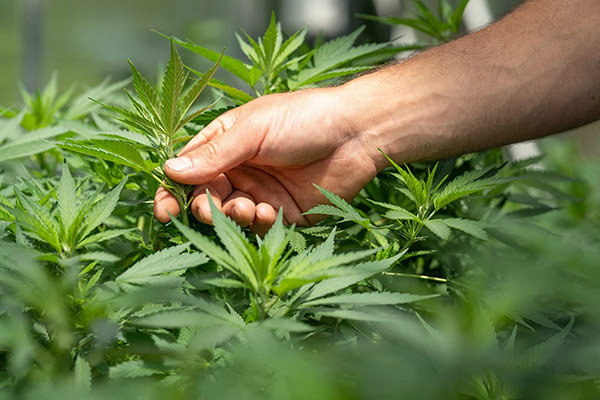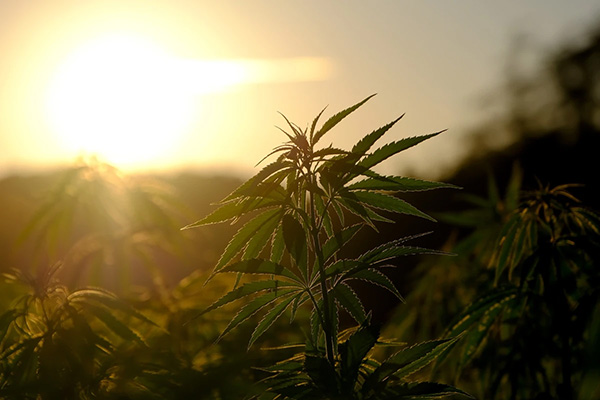How can the cannabis industry reduce its carbon footprint?
How can the cannabis industry reduce its carbon footprint?

The challenges of growing cannabis sustainably are real. As powerful companies buy up smaller growing operations, addressing this pressing issue is becoming more challenging.
For thousands of years, marijuana has grown on its own without help from humans or fossil fuels. Just as plants are naturally green, cannabis consumers are generally environmentally savvy citizens.
You can see this in the often recycled or zero-waste packaging that some cannabis brands now use.
So why is marijuana's carbon footprint increasing as the industry expands? The answer to that question lies in the way marijuana is cultivated today.
Director of marketing and communications for the nonprofit Sun+Earth Certified, Heather Dunbar, said they are working to curb or even reverse the current problem of cannabis cultivation and its use of fossil fuels. Sun+Earth Certified growers grow in a comprehensive, responsible, and restorative manner. In other words, the goal is to improve the environment, not reduce it.
But as the cannabis industry continues to grow as a major player in commerce and industry, is it possible to return to climate-conscious pot-growing methods?
Or is cannabis cultivation destined to be a major consumer of fossil fuels as the industry grows?
Use the Sun - it's free.

One of the most significant contributors to the carbon footprint of cannabis cultivation is how the plants get their light to grow. Like all plants, cannabis needs light to grow. However, only a small part of the US crop is grown outside, taking advantage of the Sun's natural light. Politico said that in the US, "80 percent of marijuana is grown indoors, using advanced lighting and environmental controls to maximize the plant's production".
Rather than use natural light, most companies use indoor cannabis grow setups. These reduce the number of variables and create a higher yield but at a higher financial and environmental cost.
While this approach may be suitable for larger companies' bank accounts, it isn't good for the environment. Even discounting the cost of renting or buying a suitable property, indoor industrial grow setups cost as much as $75 a square foot.
For comparison, a greenhouse grows cost around $50 per square foot, and an outdoor grow costs about $10 to $15 per square foot. This is before the costs of running such facilities, which include power lighting systems, irrigation, and climate control for indoor growth.
Only larger companies can afford the significant initial outlay, but the facilities can grow 365 days a year, avoid many environmental issues such as pests and storms that can damage and destroy crops, and allows for customized environmental setups to suit any given strain.
Using sunlight rather than artificial light to provide nutrients to plants reduces reliance on electricity. Whether in an outdoor or semi-outdoor greenhouse setup, these regeneration methods avoid the expensive energy bills associated with using high-intensity indoor cultivation.
But it won't be easy to convince the big planters, who build large indoor facilities that run like clockwork, to harvest in bulk. Some restrictions come from legislation about securing crops, others come from the old mindset of illicit growing where the activities are hidden, and others are based on control of growing conditions. A recognizable certified badge on qualifying products is a good step in allowing consumers to choose environmentally friendly options.
Use environmentally friendly pesticides and materials.
Not only are unregulated artificial pesticides harmful to our bodies, but these toxic pesticides are also harmful to the environment.
Synthetic pesticides and fertilizers have significant negative impacts. Eliminating the use of these products can significantly reduce the carbon footprint of cannabis.
Fertilizer is also an area of opportunity for cannabis growers to reduce their footprint. Compost and homemade fertilizer are not only cheaper but also mean you don't have to buy fertilizer that has been trucked hundreds or thousands of miles. Some of the fertilizers available for purchase have damaging effects on the environment. Petrochemical pesticides and fertilizers not only negatively affect soil biology but also use a lot of fossil fuels. If growers made their own fertilizers or worked locally to source fertilizers from the community, it could help save money and the environment.
Small sustainable farms are a great way to reduce your carbon footprint.
Smaller farms are better suited to achieving environmental stability. If these farms work together as a collective, they can share best practices, join forces and work together to bridge the gap between farmers and consumers, expand the message about regenerative cannabis cultivation, and strengthen communities.
This inf of low-waste, renewable farming will spread to other farming industries that want to do the right thing but don't know how.
While this may seem like a noble and optimistic plan, there is clearly limited time to implement these changes, especially as small marijuana farms continue to struggle. Farmers who have been doing the right thing for generations are having an incredibly tough time just making ends meet. This is because of low-profit margins resulting in farmers closing their doors.
The ultimate solution and the best of both worlds
is probably a hybrid farming setup.
Mother plants and clones would start the life cycle indoors or in a state-of-the-art greenhouse. After, these plants can be reported from the nurseries and moved to a standard greenhouse to continue the vegetative phase before being moved outdoors for the flowering process. This allows for the controlled lighting of an indoor process and reduces the carbon footprint by utilizing natural light to mature the plant.
